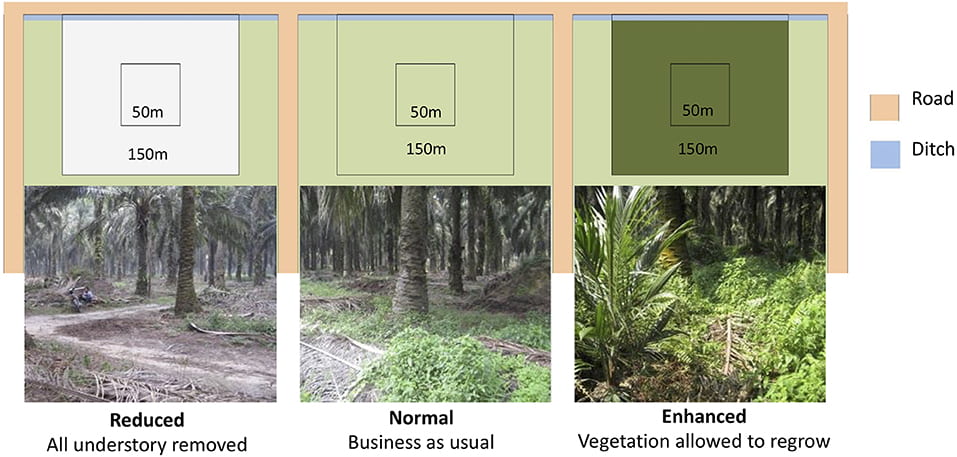Leopard cat activity is higher with increased understory vegetation in oil palm plantations, which seems to result in reduced rat numbers
Leopard cats are known to use oil palm plantations as a hunting ground for rats, and have been proposed as a possible biological control for rodent pests in plantations. Related to this, there have been questions raised regarding how understory vegetation management in oil palm plantations [many places consider these weeds and clear them] may influence leopard cat use of these sites. Finally, a study examines these unknowns.
A recently published study by Hood et al. (2019) showed that leopard cat habitat use is higher with increased understory vegetation. They also demonstrate reduced rat numbers with higher leopard cat activity. The authors suggest that the results indicate that how oil palm plantations are managed can affect leopard cat use, and possible rodent control possibilities. All these only possible with their manipulative experiments on understory vegetation management.

Experimental vegetation treatments in oil palm plantation by Hood et al. (2019) showing reduced, normal, and enhanced understory vegetation.
Curiously, there was no effect of understorey vegetation on rat numbers or rat damage on oil palm in this study. It could be that the rats benefit from more vegetation, but the higher activity of leopard cats in those environment leads to higher rat predation level, which nullified the benefits to rats. Neat if that could somehow be studied in future.
Hood et al. (2019) Understory vegetation in oil palm plantations promotes leopard cat activity, but does not affect rats or rat damage. Frontiers in Forest and Global Change 2: 51. doi: 10.3389/ffgc.2019.00051
